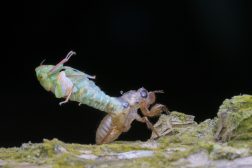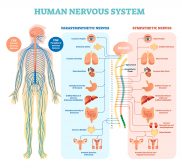Logarithm
(Science: mathematics) One of a class of auxiliary numbers, devised by john napier, of Merchiston, Scotland (1550-1617), to abridge arithmetical calculations, by the use of addition and subtraction in Place of multiplication and division.
The relation of logarithms to common numbers is that of numbers in an arithmetical series to corresponding numbers in a geometrical series, so that sums and differences of the former indicate respectively products and quotients of the latter; thus 0 1 2 3 4 indices or logarithms 1 10 100 1000 10,000 numbers in geometrical progression Hence, the logarithm of any given number is the exponent of a power to which another given invariable number, called the base, must be raised in order to produce that given number. Thus, let 10 be the base, then 2 is the logarithm of 100, because 10^2 = 100, and 3 is the logarithm of 1,000, because 10^3 = 1,000. Arithmetical complement of a logarithm, the difference between a logarithm and the number ten. Binary logarithms. See binary. Common logarithms, or Brigg’s logarithms, logarithms of which the base is 10; so called from henry Briggs, who invented them. Gauss’s logarithms, tables of logarithms constructed for facilitating the operation of finding the logarithm of the sum of difference of two quantities from the logarithms of the quantities, one entry of those tables and two additions or subtractions answering the purpose of three entries of the common tables and one addition or subtraction. They were suggested by the celebrated german mathematician Karl Friedrich gauss (died in 1855), and are of great service in many astronomical computations. Hyperbolic, or Napierian, logarithms, those logarithms (devised by john Speidell, 1619) of which the base is 2.7182818; so called from napier, the inventor of logarithms. Logistic or Proportionallogarithms.
Origin: gr. Word, account, proportion – number: cf. F. Logarithme.
Dictionary > Logarithm
You will also like...

Plant Tissues
Plant organs are comprised of tissues working together for a common function. The different types of plant tissues are m..

Roots
This study guide tackles plant roots in greater detail. It delves into the development of plant roots, the root structur..

Fish
The sea was teeming with life. Eventually, through reproduction and continued variation, fish came about. There are over..

Growth Patterns
This tutorial describes the sigmoid curve, annual plant growth, tree growth, human growth, and insect growth as the grow..

Human Reproduction
Humans are capable of only one mode of reproduction, i.e. sexual reproduction. Haploid sex cells (gametes) are produced ..

The Human Nervous System
The nervous system is essentially a biological information highway. This tutorial gives an overview of the nervous syste..

